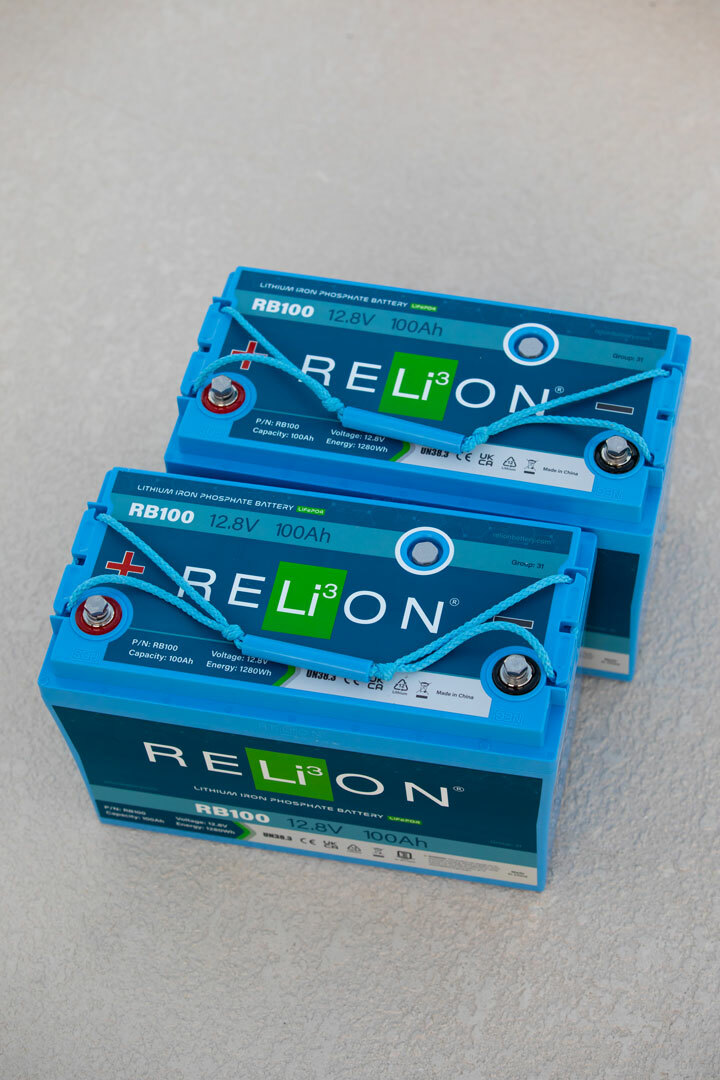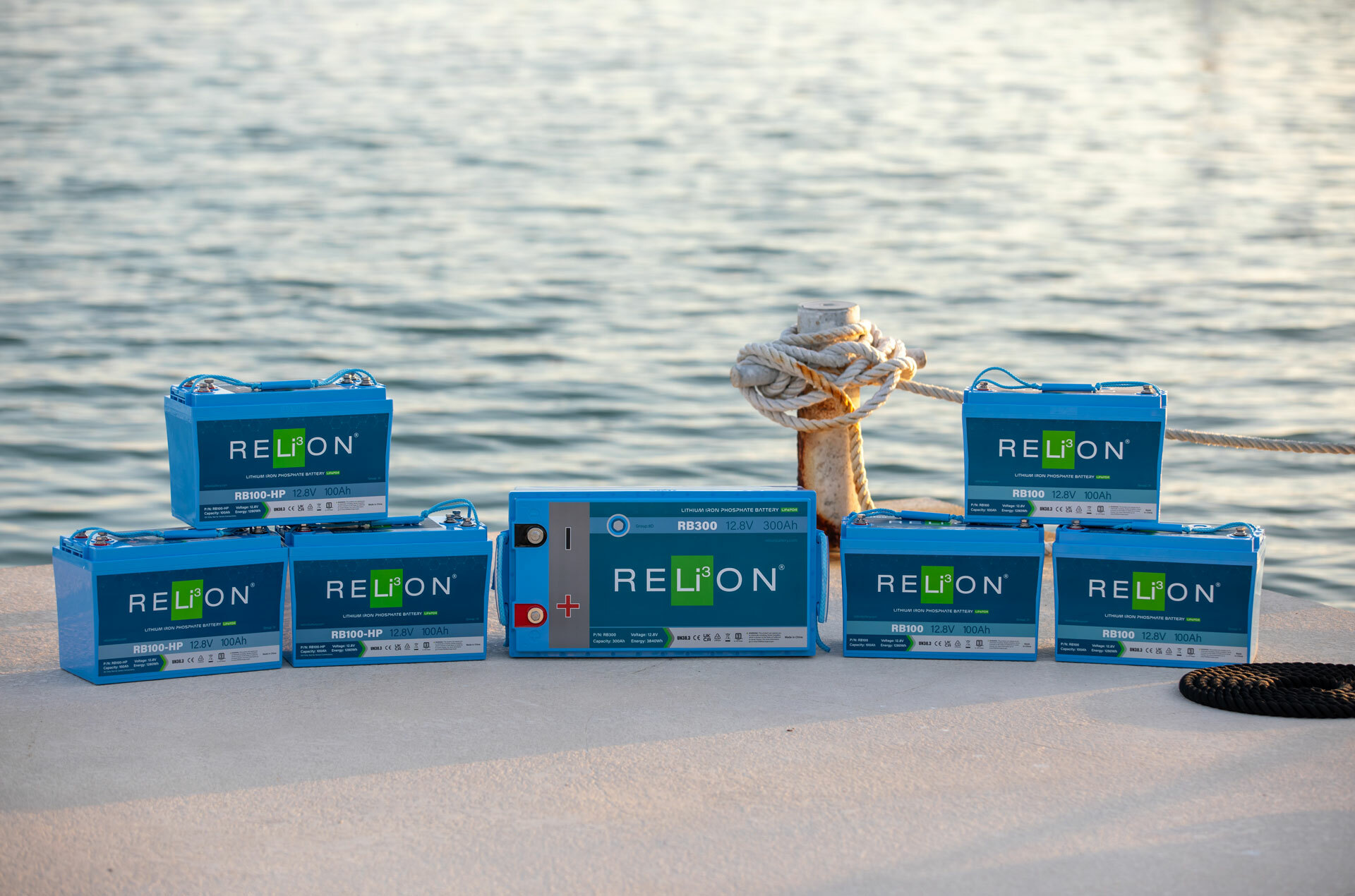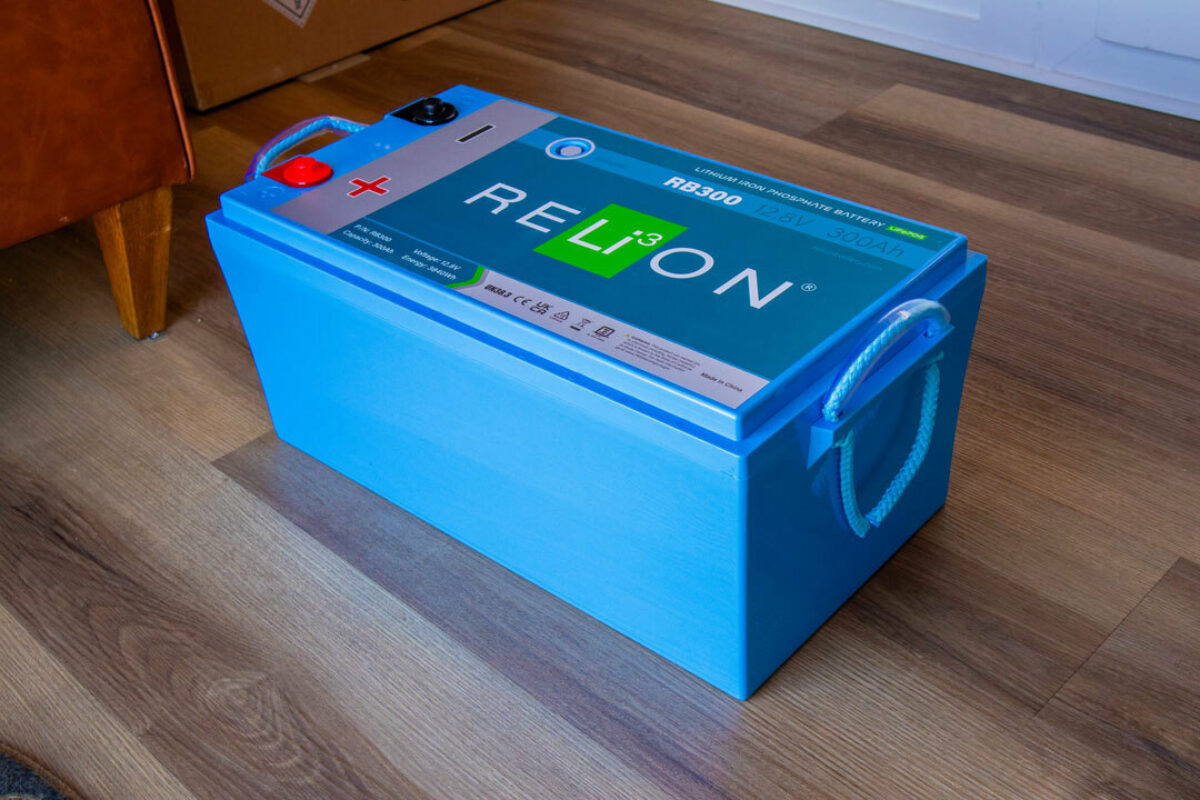Understanding the basics of battery ratings and terminology is important when comparing and selecting the right type and number of batteries for your application to ensure you have enough energy to meet your energy goals. The batteries we will focus on in this blog are classified as deep cycle, for applications where endurance is necessary. Common deep cycle applications include providing power for recreational vehicles, electric vehicles, boats, or camping. In the following, we will use our RB100 lithium deep cycle battery as an example, as it is one of the most popular batteries that work in many deep cycle applications.

Different Types Of Deep Cycle Battery Chemistry
The two most predominant categories of deep cycle batteries are lead-acid and lithium. However, within these broad categories, there are a range of different battery chemistries. For example, some of the most commonly used lithium battery chemistries today can be broken down into cobalt-based batteries (e.g., nickel manganese cobalt or NMC; lithium cobalt oxide or LCO; and nickel cobalt aluminum oxide or NCA) and non-cobalt-based batteries (e.g., lithium iron phosphate or LiFePo4 or LFP). Batteries that use non-cobalt-based chemistries, like LFP, are more chemically stable and not prone to thermal runaway or fire.
Lead-acid batteries, which have been around since the late 1800s, have multiple varieties as well, such as wet flooded (FLA), sealed gel (SLA), and absorbent glass mat (AGM). Compared to lithium batteries, lead-acid batteries are on average three times heavier, contain less power, have a much shorter lifespan, and are easily damaged by improper maintenance as well as by discharging the battery too deeply.
What Is Battery Voltage?
A volt is a unit of electric potential or electromotive force. RELiON LFP batteries have an operating range between 2.5 and 3.65 volts per cell. As they discharge, voltage declines from 3.65 volts when full, down to 2.5 volts when empty. 3.2 volts per cell is the nominal voltage for lithium iron phosphate batteries because it is the midpoint or average operating voltage. The RB100 is composed of four banks of 3.2V cells connected in series, making the total nominal voltage 12.8V. Due to the fact that different battery chemistries have different operating voltages that vary slightly, voltage is usually summed up in general by just saying 12 volts instead of 12.8. Volts are a key term to know when calculating the power rating of a given battery. A good equation to keep in mind is: volts x amps (current) = power (watts or kilowatts).
What Is An Amp?
An amp is a measurement of electric current or the count of electrons flowing through a circuit. A good metaphor for amps is to think about water flowing through a pipe. The amount of water passing through it per second can be compared to amps - it represents how much electricity flows past a given point every second. Just like volts, amps are important when it comes to calculating a battery’s power rating, as seen in the equation provided above.
Amp Hours Explained
One way to measure capacity is in amp-hours, which is the amount of current that a battery can deliver for a particular length of time. Amp-hours can be calculated using the following equations: amps (current) x discharge time; or watt-hours divided by voltage. Drawing a one-amp current for one hour equals one amp-hour. The RB100 is a 100-amp hour battery, which means its approximate runtime to 100% depth of discharge can be estimated by dividing its 100-amp hour capacity by the amp load of the DC devices you plan to power. This calculation is a different variation of the amps x time = amp-hours equation, and can be used in scenarios in which you know the amps and amp-hours, but are trying to determine the runtime. For example, if you are running a 5-amp load, the 100Ah capacity will last roughly 20 hours. If you are running a 10-amp load with the same 100Ah battery, it will last 10 hours. Regardless of how slowly or quickly you discharge the battery, RELiON lithium batteries deliver their rated capacity. This is different from a lead-acid battery, where the total capacity could be reduced by up to 30 to 40 percent, depending on how quickly it is discharged.
What Are Watts?
A watt is a measurement of power either generated or consumed. As mentioned above, the equation to calculate watts is: volts x amps. Using the same water analogy described earlier, we could say a battery would be the pump that makes the water flow through a pipe. The watt can be compared to the measure of how much water (or power, in our case), is released in any given instant or specific point in time.
Watt Hours Explained
A watt-hour is a measurement of stored energy. There are several equations that you can use to calculate watt-hours. One is watts (power) x time. Another is volts x amp-hours = watt-h Hours. Watt-hours are another way to measure the amount of energy a battery holds. Watt-hours are the nominal voltage multiplied by the capacity. The RB100 is a 1280 watt-hour battery (12.8 volts x 100 amp-hours = 1280 watt-hours). Most electronic devices are rated in watt-hours, so similar to how you measure amp-hour capacity, you can divide battery energy in watt-hours by the summed watt-hour rating of all devices you plan to power to see how long a battery could provide power.
To learn more about how to calculate your energy needs and find the optimal battery for your application and usage, visit our Lithium Battery Selector Tool.

Battery Management System (BMS)
RELiON’s batteries are all equipped with an internal BMS which protects against potentially damaging circumstances. The conditions the BMS monitors include over-voltage, under-voltage, over-current, over-temperature, short circuit, and cell imbalance. The BMS will disconnect the battery from the circuit if any of these events occur.
Understanding this terminology will help you in the next step to determining the right battery for your energy needs - sizing your battery bank, which can be found here. If you have any questions, please don’t hesitate to call, email, or reach out to us on social media.
